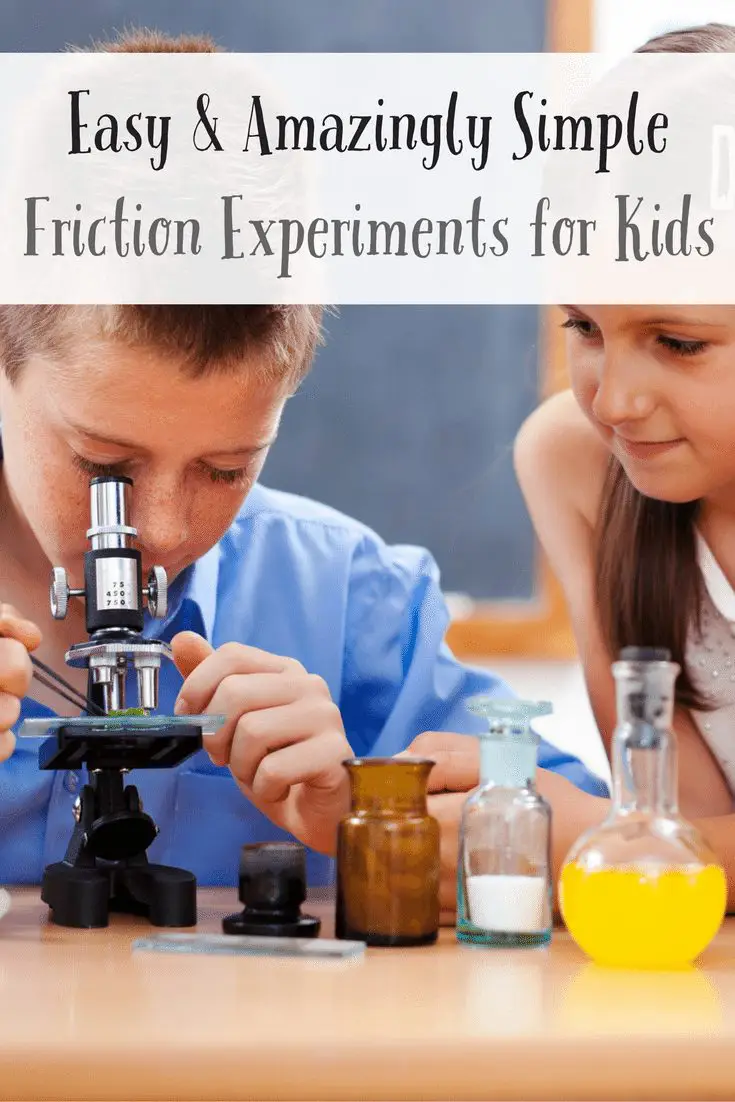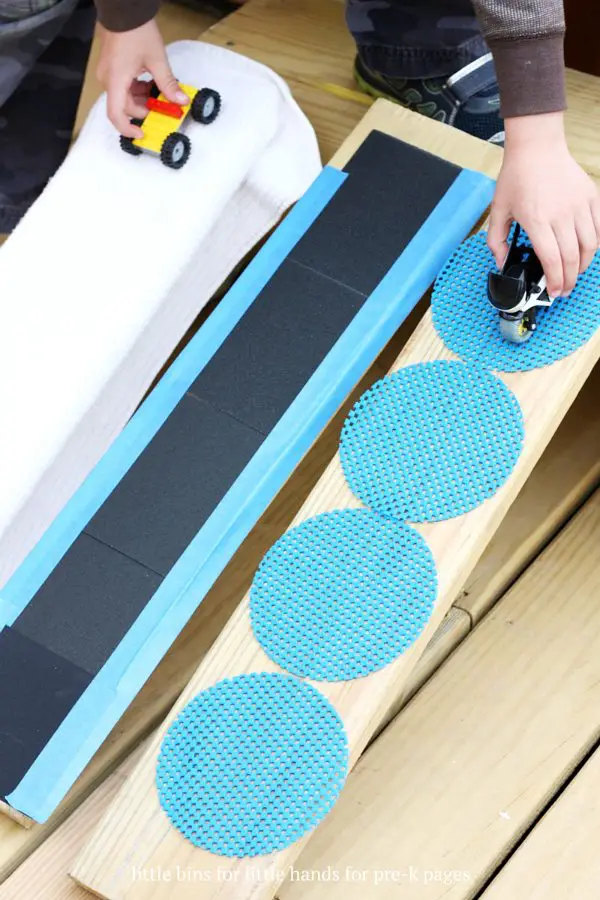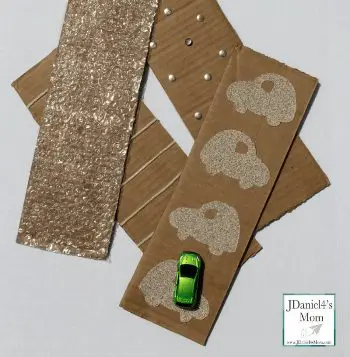I earn commissions from my affiliated links. Please see my disclosure policy for more details.
Friction is an essential part of everyday life, and understanding how it works can benefit both parents and teachers. Teaching children about friction not only enhances their knowledge of physical science but also provides them with a unique way to develop their curiosity.
From exploring simple activities at home to creating complex machines, trying different experiments on friction can help broaden your child’s educational horizons. In this blog post, we’ll explore five fascinating experiments on friction that you can easily try out at home with minimal effort and materials!
Science activities engage and intrigue kids in ways not possible by other topics. Hands-on science experiments are even better. Get kids moving and involved in the science lesson and you’re on your way.
You’ve created a lifelong scientist! Exploring science rarely takes many out-of-the-ordinary materials, often materials you can find around your home. Check out these experiments on friction for tons of learning fun!

What is Friction?
Friction is a scientific concept that kids can learn and understand. It refers to the force that acts when two objects rub against each other, slowing down or resisting their motion. Friction plays a significant role in our everyday lives and affects various activities and phenomena.
Key Points to Help Kids Understand Friction
Definition
Friction is the force that opposes the motion or relative motion between two surfaces in contact.
Causes of Friction
Friction occurs because surfaces are not perfectly smooth. Even apparently smooth surfaces have tiny bumps and imperfections that interact when they come into contact. These interactions create resistance, leading to friction.
Types of Friction
There are three main types of friction:
- Static Friction: This type of friction occurs when objects are not moving relative to each other, but there is still resistance to overcome before motion can begin.
- Sliding Friction: Sliding friction occurs when objects are in motion, sliding against each other. It is generally easier to move objects once sliding friction is overcome compared to static friction.
- Rolling Friction: Rolling friction is encountered when one object rolls over another, like a ball rolling on the ground or a wheel rolling on a surface. Rolling friction is generally lower than sliding friction.
Factors Affecting Friction
Several factors influence the amount of friction between two objects:
- Roughness of Surfaces: Rough surfaces create more friction than smooth surfaces, as they have more contact points.
- Weight or Force Applied: Increasing the weight or force between two objects generally increases the amount of friction.
- Surface Area: A larger surface area in contact results in greater friction.
Importance of Friction
Friction has both positive and negative effects. It allows us to walk without slipping, grip objects, stop vehicles, and write with a pen. At the same time, friction can cause wear and tear on surfaces, making them smooth or less effective over time.
How to Reduce Friction
Lubricants, such as oil or grease, can reduce friction between surfaces by creating a slippery barrier. Smoother surfaces or using wheels or ball bearings can also help reduce friction.
Quite simply, friction is part of the science of physics. This explanation from the Khan Academy is terrific so I will borrow it:
“The force of static friction is a force between two surfaces that prevents those surfaces from sliding or slipping across each other. This is the same force that allows you to accelerate forward when you run. Your planted foot can grip the ground and push backward, which causes the ground to push forward on your foot.
We call this “grippy” type of friction, where the surfaces are prevented from slipping across each other, a static frictional force. If there were absolutely no friction between your feet and the ground, you would be unable to propel yourself forward by running, and would simply end up jogging in place (similar to trying to run on very slippery ice).”
Introducing kids to the concept of friction through simple experiments or hands-on activities can enhance their understanding. For example, they can try sliding objects on different surfaces, experimenting with different materials, or observing how surfaces with different textures interact.
Friction Experiments for Kids
Friction experiments are some of the easiest, most inexpensive, and most enjoyable for kids. Below are my favorite and super cool friction activities for kids.
Easy & Amazing Experiments on Friction
Exploring Ramps & Friction from Pre-K Pages
What a cool and easy way to experiment with friction! Kids love cars and ramps. So, why not introduce a little science learning with a friction activity? This science lesson involves mostly things from around the house, too, which is always a bonus!
Cool Experiments with Friction from JDaniel4’sMom
This activity is similar to the above but gives additional ideas for exploring different surface tensions with cars and ramps. I love the textures used in this friction activity!
This activity completes the learning circle by making predictions, noting observations, and examining the results. This science activity integrates math and other less tangible skills such as focus and concentration completing the activity!
Hockey Science from Creative Family Fun
I love this activity for so many reasons. It demonstrates friction in a fun and cool way. Kids love this activity and it includes a worksheet to bring the friction learning home.

Easy Science of Friction Activity
One of outnumbers all-time favorite science lessons of all time. Does it get any easier than a bottle, rice, and a chopstick? Okay, there is a funnel involved in the experiment, also.
The best part is how mesmerized children are by being able to pick up a bottle of rice with a chopstick alone. Science is indeed magical. Explore Newton’s 3rd Law of Motion with this activity!
Make a Hovercraft from Science Sparks
Does science get any cooler than making a hovercraft? You will be hard-pressed to find a more engaging and easy friction experiment. Kids have fun and make a really cool machine on top of it.
By learning about friction, kids gain insight into how it affects their everyday lives and the world around them, while also appreciating the role it plays in various scientific and technological applications.



